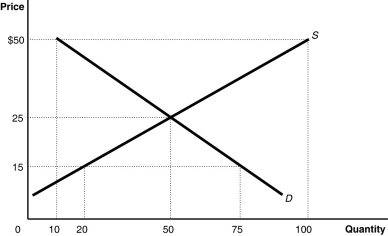Figure 3.8  Alt text for Figure 3.8: In figure 3.8, a graph plotting intersecting supply and demand curves represents the market for canvas tote bags.
Alt text for Figure 3.8: In figure 3.8, a graph plotting intersecting supply and demand curves represents the market for canvas tote bags.
Long description for Figure 3.8: The x-axis is labelled, Quantity, with the values 0, 10, 20, 50, 75, and 100 marked.The y-axis is labelled, Price, with the values 0, 15, 25, and 50 dollars marked.Curve D is a straight line which slopes down from the top left corner to the bottom right corner.Curve S is a straight line which begins in the bottom left corner and slopes up to the top right corner.The equilibrium of the 2 curves is (50,25) .The point plotted on curve S to the left of equilibrium is (20,15) .The point plotted on curve D to the right of point of equilibrium is (75,15) .The point plotted to the right of equilibrium on curve S is (100,50) .The point plotted to the right of the equilibrium on curve D is (10,50) .
-Refer to Figure 3.8.The figure above represents the market for canvas tote bags.Assume that the price of tote bags is $15.At this price,
Definitions:
Subliminal Perception
involves detecting information below the threshold of conscious awareness, influencing thoughts, feelings, or actions without conscious realization.
Effect on Behavior
The impact that various factors, such as environment, psychology, and genetics, have on how individuals act or respond to situations.
Cocktail Party Phenomenon
The ability of individuals to focus their attention on a single conversation in a noisy environment, filtering out other conversations.
Phi Phenomenon
An optical illusion of perceived continuous motion between separate objects viewed rapidly in succession, such as in motion pictures.
Q22: All else equal, a shortage of orange
Q121: An example of a final good would
Q135: The primary purpose of _ is to
Q154: After the legalization of recreational marijuana, the
Q163: Refer to Figure 3.12.The figure above represents
Q200: Which of the following are represented by
Q219: Which of the following is evidence of
Q266: Refer to Table 2.12.Does either Estonia or
Q271: Assume that both the demand curve and
Q289: If opportunity costs are _, the production